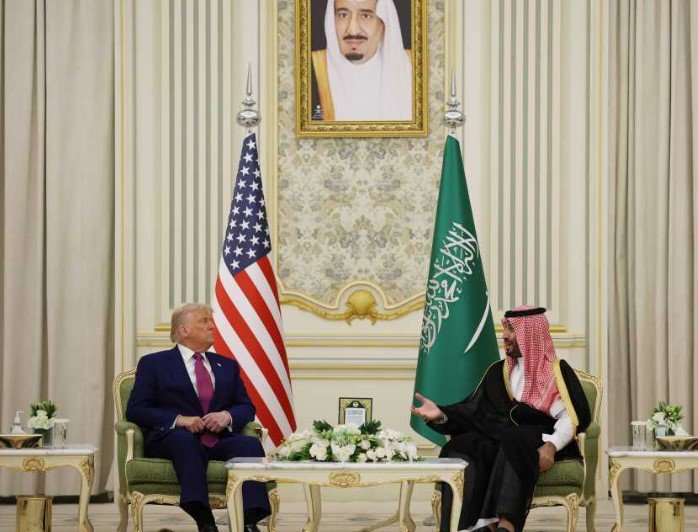President Donald Trump has claimed a major win in the Middle East by brokering a ceasefire between Israel and Hamas that ends two years of brutal conflict in Gaza. This breakthrough, announced in early October 2025, includes the release of all remaining hostages and sets the stage for phased withdrawals, drawing praise and scrutiny from global leaders.
Trump’s Return Sparks Rapid Change
Trump took office in January 2025 and quickly shifted U.S. policy toward the region. Unlike previous administrations, he focused on immediate pressure tactics that forced key players to the table.
Experts note this approach built on lessons from his first term but adapted to current realities. The war, which started with Hamas attacks on October 7, 2023, had claimed over 40,000 lives by mid-2025, according to United Nations estimates. Trump’s team prioritized cutting off funds to militant groups, a move that weakened their positions.
This strategy paid off when Israel approved the ceasefire framework on October 9, 2025. The deal came after intense U.S. diplomacy, including Trump’s visit to the region.

Pressuring Iran to Back Down
A core part of Trump’s plan targeted Iran, seen as a main backer of Hamas and other groups. He reinstated strict sanctions on Iranian oil exports, slashing their revenue by an estimated 70% within months.
This economic squeeze forced Iran to halt its nuclear advances. In June 2025, U.S. intelligence reported that airstrikes had delayed Iran’s bomb program by at least a year, though not fully destroyed it.
Trump also greenlit Israeli strikes on Iranian air defenses, destroying key sites. These actions removed the threat of a nuclear-armed Iran, which had loomed over peace talks for years.
The policy echoed Trump’s “maximum pressure” campaign from his first term but ramped up with direct military support. As a result, Iran’s support for proxies like Hezbollah diminished, creating space for negotiations.
Dismantling the Ring of Fire
Trump’s administration empowered Israel to neutralize threats from Hezbollah in Lebanon. This “ring of fire” strategy by Iran had encircled Israel with allied militias.
By late summer 2025, Israeli forces had degraded Hezbollah’s capabilities through targeted operations. U.S. backing ensured these moves did not escalate into a wider war.
The impact was clear: Hezbollah’s rocket attacks on Israel dropped by 90% after the operations. This shift isolated Hamas in Gaza, making a ceasefire more feasible.
Analysts point out that previous U.S. leaders hesitated on such support, fearing backlash. Trump’s decisive stance changed the dynamics on the ground.
Here are key outcomes from these efforts:
- Reduced Iranian funding to militants by billions.
- Destruction of over 500 missile sites in Lebanon.
- Forced relocation of thousands of fighters away from borders.
- Opened paths for humanitarian aid into Gaza.
Hostage Deal and Ceasefire Details
The agreement’s first phase, announced on October 8, 2025, focused on hostages. Hamas released all 100-plus captives taken in 2023, in exchange for Israel freeing about 1,700 Palestinian prisoners.
Israel agreed to hold only 50% of Gaza initially, with plans for gradual pullback if Hamas complies. This blueprint aims for a full peace by 2026.
Trump hailed it as a “historic dawn” during his speech to the Israeli Knesset on October 13, 2025. He credited global leaders but stressed U.S. leadership.
| Phase | Key Actions | Timeline |
|---|---|---|
| Phase 1 | Hostage and prisoner exchange; Initial ceasefire | October 2025 |
| Phase 2 | Partial Israeli withdrawal; Aid delivery | November-December 2025 |
| Phase 3 | Full withdrawal; Reconstruction talks | January 2026 onward |
| Phase 4 | Long-term security guarantees | Mid-2026 |
This table outlines the 20-point plan Trump proposed, showing a structured path forward.
The deal also includes monitoring by international observers to ensure compliance. While experts warn of fragility, early signs show reduced violence.
Expert Views on the Breakthrough
Many analysts credit Trump’s mix of diplomacy and force. Victor Davis Hanson, a historian, outlined ten different approaches that set this apart from past failures, including sanctioning Iran and supporting Israel’s defensive actions.
Others, like those from CNN and ABC News, say the hard work is just starting. They highlight risks if any side breaks the terms.
Public sentiment on social media platforms reflects hope mixed with caution. Posts celebrate the hostage returns but question long-term stability.
Recent events, such as Trump’s Egypt summit on October 14, 2025, aim to solidify these gains. Leaders from across the region attended, signaling broader buy-in.
Path Ahead for Lasting Peace
Looking forward, Trump pushes for economic growth to lock in peace. He envisions investments in Gaza reconstruction, potentially unlocking billions in regional trade.
Challenges remain, including rebuilding trust and addressing Palestinian statehood. Yet, with violence paused, there’s optimism for a new Middle East.
This breakthrough entertains hopes of stability while solving immediate humanitarian crises. It informs readers on how bold policies can shift entrenched conflicts.
Share your thoughts on this development in the comments below, and spread the word by sharing this article with others interested in global affairs.
